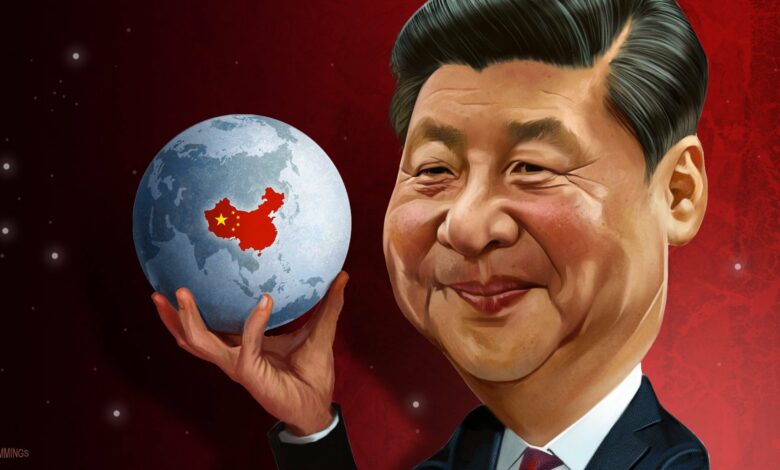A world without China

A steady glimpse on the current news section would give you nothing but talks of China’s leader Xi Jinping’s gambit of devising a world without US technology. But let’s, for a moment, consider a world without China. And no, I’m not trying to assert the ideals of utopian/dystopian fields to your imagination, I’m merely trying to speed up the conversation we might have in the distant future. Why, you ask? Well, a synopsis of the new politics of this dual world paints the picture of an approaching choice- a world with China, or a world without China.
It is without a doubt that the world would be a very different place without China. Let’s start at the micro-level. Consider looking into your ordinary day, for starters. Your desk lamp, the television, your Nike shoes, the kitchen appliances, smartphones or any other everyday item your world revolves around- all made or assembled in China. A manufacturer of 90% of our laptops, a refiner of close to 80% of the planet’s rarest metals, ruler of the virtual banking industry and home to about one-fourth of Fortune 500 companies– there’s no way we’d be living the life that we are living right now, without this dramatic global superpower. Wait, did we forget to mention the largest global exporter with a 16% market share? China really is the world’s workshop when it comes to commodity processing, manufacturing, industrial cycles and so much more. So be it India’s call for boycotting China or America’s Road to protectionism, the impact is way too convoluted to be assessed. We’re running at what China is feeding us and this realisation makes it way too hard to imagine a world without China. And if we press too hard to imagine that China’s economy comes crashing down with its growth rate succumbed to low single digits, it would not be too hard to supplement the imagination with the sufferings of the already-shaky world economy. A World Health Organisation (WHO) report from 2016 expressed that the Chinese economy accounts for about 17.2 per cent of the world’s Gross Domestic Product (GDP) as measured on a purchasing power parity basis, which has only grown since. This statistic is sufficient in itself to portray the dwarfing result in the absence of China.
Oh, did you think we’re only going to talk about how China runs the world in production? Wait before you realise China’s impact on global consumption– with the country’s consumers spending about USD 6 trillion per year, as from data of 2020. Over 35% of the global luxury goods spend comes from China. China is the European Union’s third-largest export market, consuming nearly USD 220 billions of European Union goods each year. It is also the United Kingdom’s fifth-largest export market with consumption standing close to USD 30 billion. China also is a major contributor to the global tourism industry, with about USD 250 billion spent internationally, back in 2016. The resource economies like Australia, New Zealand, Canada, Russia and Brazil are also very closely linked to the presence of Chinese commodity demand. The currency markets of these economies, as well, have time and again explicitly represented its closely knitted correlation with China. There are no two ways about the fact that the global economy would be shaken in the absence of China, for reasons much more significant than these statistics can explain at the point.
Now consider China’s Asian trading partners that discernibly depend on China as their largest source of external demand. Not only smaller Asian developing economies but also the more developed ones like Japan and Korea also present the case in point for the aforementioned argument. As can be concluded, the absence of the Chinese economy would easily affect the combined growth rate of these economies by a significant amount. The United States also present significant arguments for the impacts of the non-presence of China, as witnessed from the recent developments. Europe, as well, stands as the result of China-led growth for the German-led Europe growth depends heavily on Germany’s heavily exports dependent economy. Undoubtedly, they would be the flag bearers of loss in case of a Chinese downturn. A 2016 report by IMF that devoted in detail analysis of the global impact of China’s downturn would confirm the aforementioned statements through model-based assessment. The said research clearly points at how China’s global spillovers would add to the direct impact of China’s growth shortfalls, driving the world economy into a pothole both directly and indirectly, especially at a time as fragile as right now, with the world economy stricken by the global pandemic, which, by the way, traces back to China too.

Also, recall how the West profited from China’s need to modernise and liberalise its economy by making it the destination for many heavy polluting industries of The West till 2017-18. China has since emerged as the world’s environment leader by gracefully embracing hydro, wind, solar and nuclear technology as the key to its future. Being home to over 400 Electric vehicle companies and leading consumer and manufacturer of the solar power industry, China stands out as the epitome of what needs to be the future of the world. It is the largest user of wind power and controls the manufacturing of about 80 per cent of the raw materials needed in Electric Vehicle battery production.
The purpose of this discussion is not to bring in a positive light the achievements of China but to provide a realistic approach as to how decades of investment, supply chain integration and reliability has brought China to a position it is at today and even the imaginary inculcation of a world without China seems more like a nightmare for the global economy.




